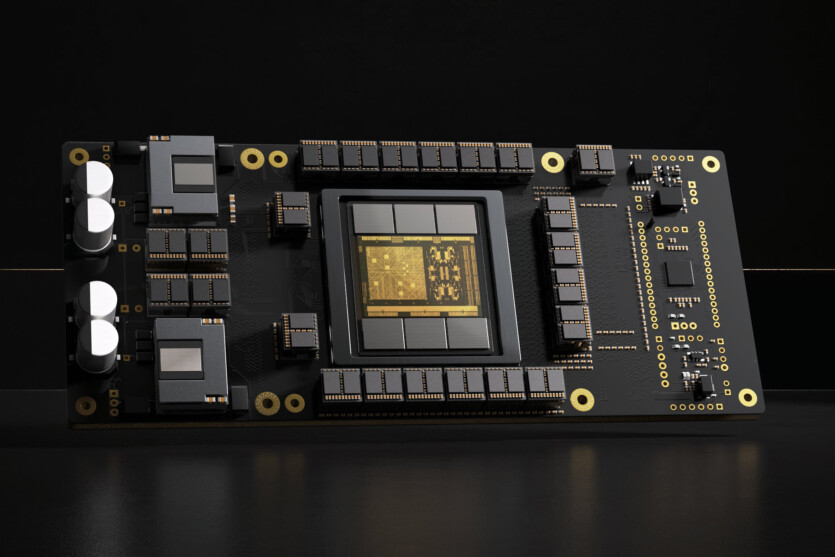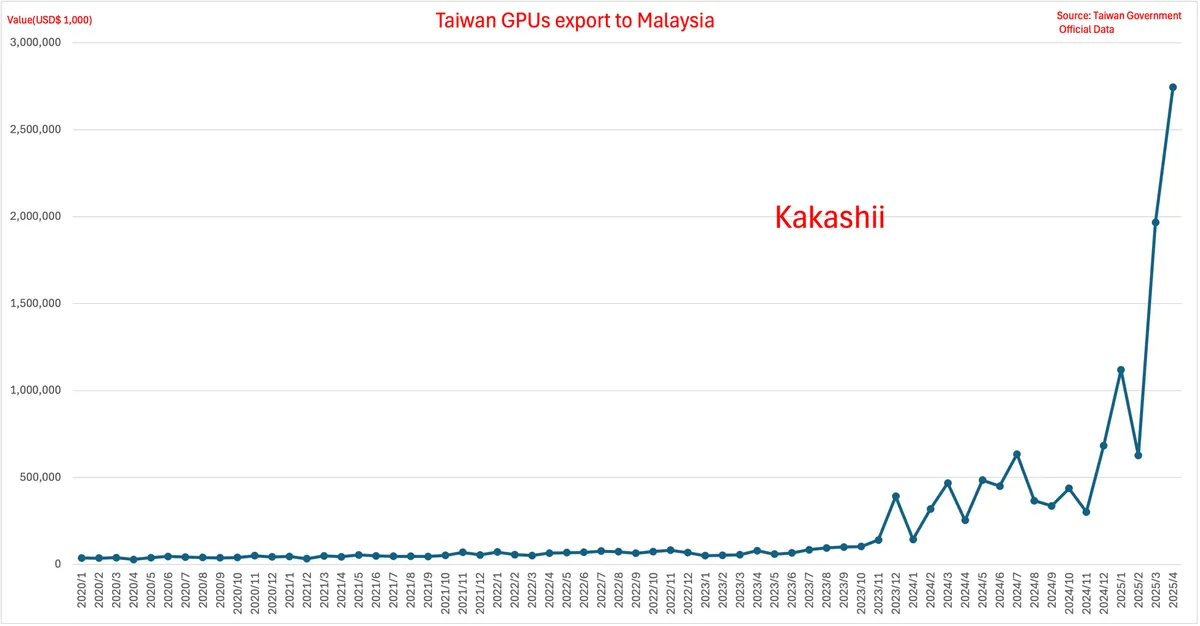
In a world where GPU power is the currency for the development of artificial intelligence, cloud computing, and high-performance computing systems, a sharp rise in GPU imports to a particular country always attracts attention. It so happened that amid the unfolding trade war between the US and China, an unprecedented surge in GPU orders occurred in Malaysia. The country, which had not previously been a center of global GPU logistics, is set to see an unprecedented —3,400% jump in GPU imports in 2025. This has already raised concerns among international regulators and analysts.
According to, published by @kakashiii111 on social network X with reference to the Taiwan International Trade Administration, Malaysia imported GPUs worth $2.74 billion in April 2025. This is an impressive increase of 3400% compared to the same period in 2023.
Imports of GPUs to Malaysia increased quite sharply during the year. In January 2025, imports amounted to $1.12 billion, which is 700% more than in the previous year. In February, the volume of imports amounted to $627 million, which is slightly less, but still significant. In March, there was a sharp surge to $1.96 billion, which is 3400% more than in the same month of 2023. Overall, in the first four months of 2025, Malaysia imported more than $6.45 billion worth of GPUs — more than in the entirety of 2024.
This could not have gone unnoticed against the backdrop of severe US restrictions on the export of high-tech components, such as Nvidia graphics cards, to China. This increase in imports to Malaysia raises suspicions that a significant portion of these components may be shipped to China in a way that circumvents sanctions — through Malaysia.
In March, according to customs data, Taiwan exported $1.87 billion worth of computing systems to Malaysia — 366% more than in March 2024. At the same time, this is an incredible 55,117% more than in March 2023. This confirms a broader trend of rapidly increasing supplies to the region, which could become a transit area for bypass schemes.
Whether Malaysia is really building up its computing capacity for domestic use — particularly in the area of cloud-based AI platforms — or just acting as a transshipment point for «gray» shipments to China — remains an open question. The situation is further complicated by the fact that Nvidia now reports revenues at the place of billing rather than the actual delivery address, so the volume of physical shipments remains opaque.
The situation will be especially acute on May 15, when the AI Diffusion Rule, a new US restriction on the export of AI accelerators, comes into effect. Against this backdrop, Malaysia may finally establish itself as a «backdoor gateway» for banned technologies — despite official statements about fighting smuggling.
As we can see, geopolitical constraints and economic routes are now becoming as important as technical specifications in the GPU market. Malaysia has found itself at the center of a global game — either as a new technology hub in Southeast Asia or as one of the largest bypass routes for the supply of banned components. After all, China has considerable experience bypassing US export restrictions.
Source: tomshardware


Spelling error report
The following text will be sent to our editors: